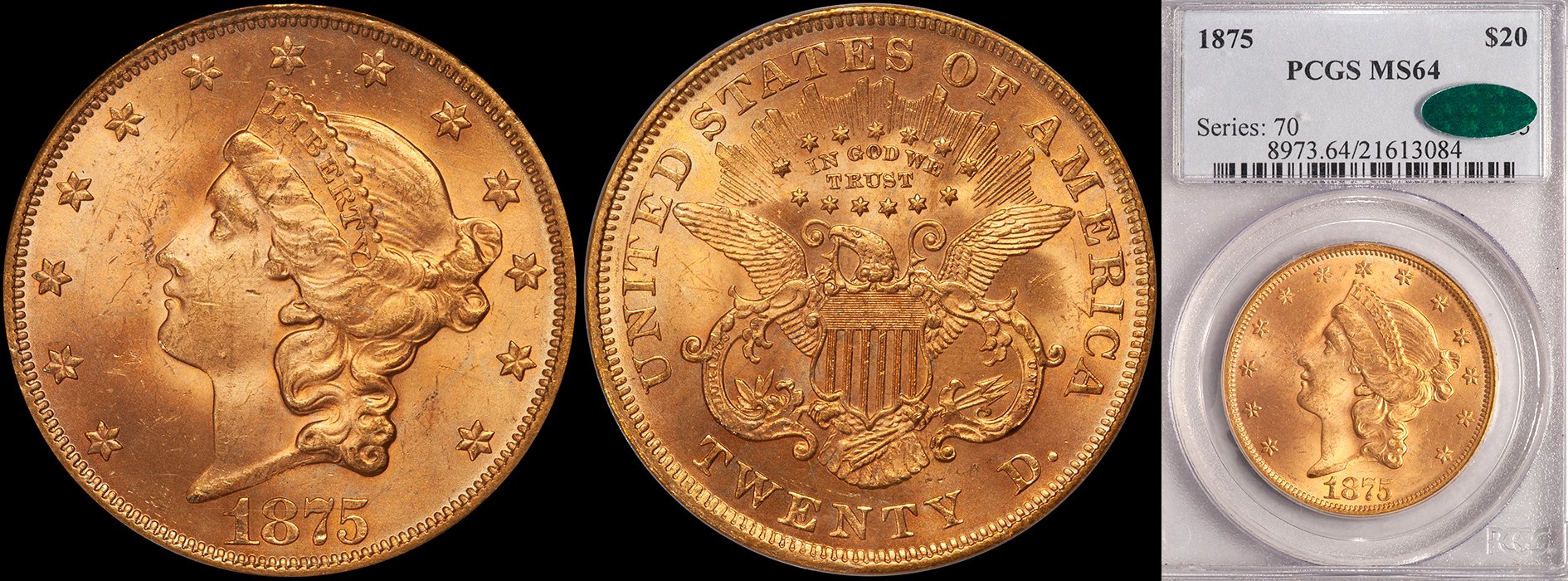Some Further Thoughts on Carson City Double Eagles
/I've been working on a third edition of my book on Carson City gold coins. For some odd reason, I've been working from back to front, meaning that I've done the new research of double eagles before following this with eagles and half eagles. I've been able to uncover some really eye-opening new information on the rarity and price levels of Carson City double eagles and I'd like to share a few tidbits. The last Carson City book that I produced was published in 2001, so almost a full decade has passed. My first impression about the market for Carson City double eagles is that it has become far, far more active than ever. Prices have risen significantly since 2001, especially for rarities and for high grade pieces.
In 2001, the five rarest Carson City double eagles in terms of overall rarity (i.e., total known) were the 1870-CC, 1891-CC, 1871-CC, 1878-CC and 1879-CC (these last two issues were tied for fourth rarest). In 2010, the five rarest Carson City double eagles in terms of overall rarity are the 1870-CC, 1871-CC, 1891-CC, 1879-CC and 1885-CC (these last two issues were tied for fourth rarest).
The 1870-CC has remained an extremely rare coin, despite a surprisingly high frequency of auction appearance in the middle part of this decade. I had previously thought 35-45 were known. Today, I think that number is around 40-50. This includes a number of low grade coins and at least five or six that are either damaged or cleaned to the point that can not be graded by PCGS or NGC.
The rarity of the 1891-CC seems to have diminished quite a bit. I think there are two reasons for this. The first is that I overestimated its rarity in 2001. The second is that a significant number of examples have been found in Europe and other overseas sources. This date hasn't become plentiful in higher grades but it is far more available in AU50 to AU55 than I ever remember it being before.
The 1871-CC seems more available as well. In 2001, this issue was very hard to find in any grade and it was almost never seen above AU50. Today it is more available and the number of coins graded AU53 to AU55 has risen dramatically. I would attribute much of this to gradeflation as the majority of the 1871-CC double eagles that I see in AU53 and AU55 holders are "enthusiastically" graded, to say the least. In properly graded Mint State, the 1871-CC remains exceedingly rare.
A date whose rarity has become more apparent is the 1885-CC. In the 2001 edition of my book, this date was not even listed in the top six rarest Carson City double eagles. I now rank it as being tied for fourth along with the 1879-CC.
Everyone loves a sleeper, right? The dates that I believe are underrated (and undervalued) in the Carson City double eagle series include the 1872-CC, 1877-CC, 1882-CC and 1892-CC.
In higher grades (AU50 and above), the rarity scale of the Carson City double eagle series has remained remarkably consistent. In 2001, I stated that the 1870-CC, 1871-CC, 1879-CC, 1878-CC, 1891-CC and 1872-CC were, in that order, the six rarest issues. In 2010, I believe the six rarest are the 1870-CC, 1871-CC, 1878-CC, 1879-CC, 1872-CC and 1891-CC. In other words, the same six dates are still the keys in higher grades but there are now some minor changes in the order.
How much more available have high grade Carson City double eagles become since 2001? In some instances, population figures have doubled or even tripled. This tends to be primarily in the MS61 and MS62 range and I think there are a few good reasons for this. The first is gradeflation. Some coins that were nice, high end AU55 to AU58 pieces in 2001 are now MS61 or even MS62 by today's more liberal standards. The second is resubmissions of existing coins. For many Carson City double eagles there is a significant price increase from MS61 to MS62 and submitters may send in a high end coin many, many times in attempt to get a higher grade. The third reason is that some very impressive coins have been found in Europe since 2001. I know that I have been able to buy dozens of fresh-to-the-market Uncirculated CC double eagles that trace their origins to overseas sources and I would imagine that other dealers have handled numerous choice, fresh Mint State pieces as well.
If you purchased Carson City double eagles in 2001 and have held them since, you have done very nicely. Obviously, one of the main reasons for this is the fact that gold has gone from around $400 to close to $1300 in the past decade. I can remember buying common date CC Twenties in lower grades (VF and EF) in the early part of this decade for $750 or so. Today, the basal value of any CC double eagle is around $1,750-2,000.
Prices of high grades coins are interesting to study. One date that I looked at carefully was the 1893-CC, mainly because it is more available in MS63 than any other CC double eagle. In 2001, you could buy an 1893-CC in MS63 for around $10,000-12,000. In 2005-2006, the same coin would have probably cost you between $15,000 and $20,000. Today, if you can find an 1893-CC in MS63 it will run in the $25,000-30,000 range and a really choice PCGS example with a CAC sticker might even bring $35,000.
I'll continue to tease you with updates on my Carson City book in the coming months and I'm hoping that it will be ready for publication sometime in the Spring of 2011.









